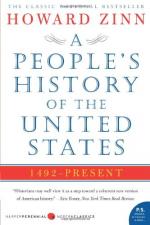
|
| Name: _________________________ | Period: ___________________ |
This test consists of 15 multiple choice questions and 5 short answer questions.
Multiple Choice Questions
1. What is Chapter 13’s title?
(a) Robber Barons and Rebels
(b) Slavery Without Submission, Emancipation Without Freedom
(c) The Empire and the People
(d) The Socialist Challenge
2. During the Great Depression, unemployment in the United States rose to what percentage?
(a) 20%
(b) 25%
(c) 10%
(d) 15%
3. In what year did Richard Nixon resign as President of the United States?
(a) 1981
(b) 1977
(c) 1974
(d) 1969
4. What name refers to a U.S. military operation during the Vietnam War, lasting from 1962 until 1971, that employed chemical warfare?
(a) Operation Eagle Landing
(b) Operation Sushi Chef
(c) Operation Ranch Hand
(d) Operation Orange Agent
5. The first of the Jim Crow laws was enacted in what year?
(a) 1901
(b) 1876
(c) 1863
(d) 1836
6. Eugene V. Debs ran unsuccessfully for President of the United States several times as a candidate for what political party?
(a) The Democratic Party
(b) The Socialist Party of America
(c) The Green Party
(d) The Youth International Party
7. What is the title of Chapter 19?
(a) War is the Health of the State
(b) Or Does It Explode
(c) Surprises
(d) Self-Help in Hard Times
8. The People’s Party, or the “Populists” was a short-lived political party established in what year?
(a) 1932
(b) 1911
(c) 1915
(d) 1891
9. In what year did Emma Goldman immigrate to the United States?
(a) 1865
(b) 1905
(c) 1885
(d) 1798
10. In what year did President Harry S. Truman issue Executive Order 9981?
(a) 1902
(b) 1865
(c) 1848
(d) 1899
11. What is the title of Chapter 12?
(a) Self-Help in Hard Times
(b) The Seventies: Under Control
(c) The Empire and the People
(d) Or Does It Explode
12. What is the title of Chapter 17?
(a) Slavery Without Submission, Emancipation Without Freedom
(b) Or Does It Explode
(c) Self-Help in Hard Times
(d) Robber Barons and Rebels
13. When did the Haymarket affair take place in Chicago?
(a) December 15, 1791
(b) May 4, 1886
(c) March 27, 1825
(d) February 2, 1826
14. What term refers to a political philosophy that advocates stateless societies based on non-hierarchical free associations?
(a) Socialism
(b) Fascism
(c) Anarchism
(d) Democracy
15. What did Executive Order 9981 abolish?
(a) Racial discrimination in the armed forces
(b) Women’s right to vote
(c) Trade agreements with the Native Americans
(d) Slavery of African Americans
Short Answer Questions
1. The Homestead Strike was an industrial lockout and strike which began on what date?
2. Who was elected president of the American Federation of Labor at its founding convention?
3. What term refers to the period of feminist activity that first began in the early 1960s in the United States, and eventually spread throughout the Western world?
4. What is defined as an economic system characterized by social ownership of the means and production and cooperative management of the economy?
5. The timing of the Great Depression varied across nations, but in most countries it started in what year?
|
This section contains 413 words (approx. 2 pages at 300 words per page) |

|




